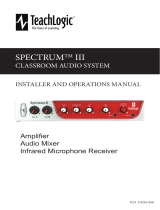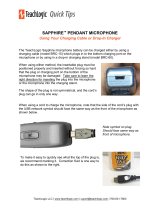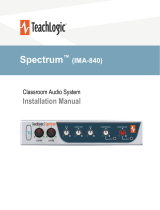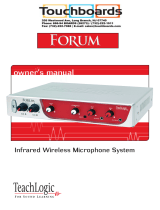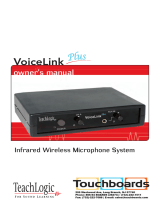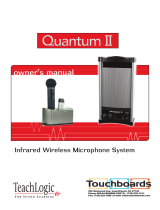
9
infrared microphones
The infrared microphone/transmitter is comprised of a microphone input, signal processing circuits
and several emitting diodes that transmit the vocal signal to the sensor.
The microphone/transmitter can be the Sapphire or Handheld. The rechargeable batteries will provide
6–8 hours of service per charge. Place the microphone/transmitter in the charger for overnight charge
and it will be ready for another day’s use.
The drop-in battery chargers are specically designed to recharge lithium & NiMH batteries at an
optimum rate for Matrixum operating capacity and extended service life. Charger will automatically
start charging the batteries upon insertion and will shift to a maintenance charge when batteries are
fully charged.
The Sapphire’s vocal clarity is unsurpassed. Its high
level output is achieved by the unidirectional (Cardioid)
microphone and a unique free air suspension system. With
a built-in breath lter, the Sapphire can function as a pass
around hand mic.
The strategic alignment of the emitting diodes assures
reliable connectivity throughout the room without static or
drop out.
With a tap on the power button, the microphone is muted
for private conversation—tap again to restore to normal
operation. The auxiliary input allows wireless playback of
your personal music device through the Sapphire. A three
position slide switch provides selection of normal, medium
(-3 dB), or low (-6 dB) microphone sensitivity.
features
• Elegant design
• Only 1.4 oz. including battery
• Long life Lithium Ion battery
• Rechargeable via USB cable
• Battery level indicator – Back
light under power switch
• Momentary mute button,
backlight blinks in mute mode
• Push “on/o” power
• Channel “A” or “B” selectable
• Three level microphone vol-
ume switch
• 3 voice sensitivity settings
(Normal, -3dB, -6dB)
• Auxiliary input (3.5mm) for
headset or music device
• Wear with a lanyard or slide
directly on neckline collar
(IRT-60) sapphire transmitter





















